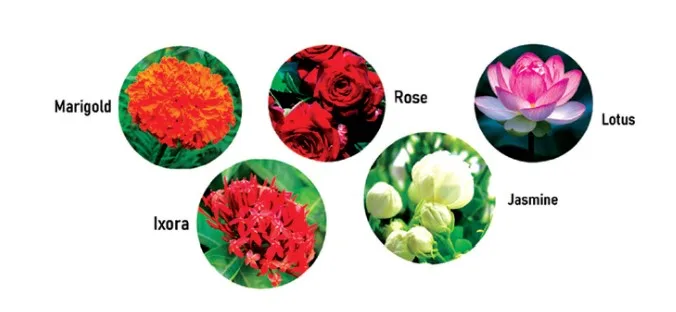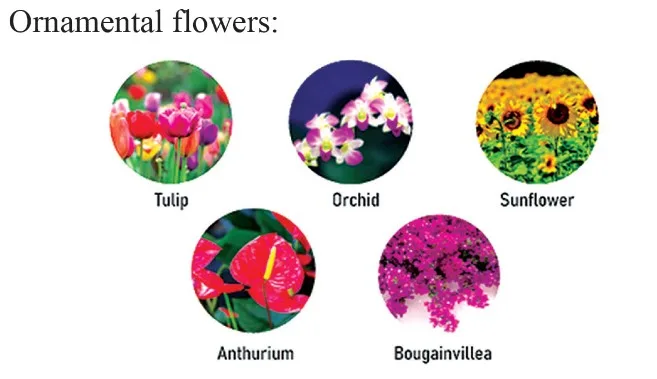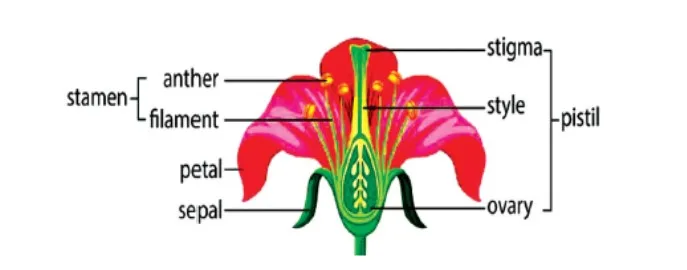
Flower – A Fascinating Organ of Angiosperms: Flowers have long held a special place in the hearts of humans. Flowers have been valued for their beauty and social, religious, and cultural significance. They commonly express emotions like love, happiness, and sorrow. In gardens, we see beautiful flowers, which are plant parts that produce fruits containing seeds.
"Angiosperm" refers to a plant with seeds enclosed within its fruit. Angiosperms include oranges, mangoes, roses, and hibiscus flowers. Sexual reproduction is common among all flowering plants. The various structures of flowers and their parts demonstrate how plants have adapted to produce fruits and seeds. This article looks at the fascinating world of flowers in angiosperms.
Sexual Reproduction in Flowering Plants MCQ for NEET
Flower – A Fascinating Organ of Angiosperms
Angiosperms, or flowering plants, are vascular plants characterized by stems, roots, and leaves. Their seeds are contained within the fruit produced by a flower. Angiosperms make up the majority of plant species on Earth and are highly adaptable, growing in a variety of habitats including trees, shrubs, herbs, and bushes.
Angiosperms, which evolved approximately 250 million years ago, are an important component of terrestrial ecosystems, accounting for roughly 80% of plant species. They are an essential component of the food chain, providing humans and animals with their primary source of nutrition.
Angiosperms are the most diverse group of land plants, comprising approximately 295,383 known species. They differ from gymnosperms in that they have flowers endosperms in their seeds, and produce fruits containing seeds.
A flower's biological function is to facilitate reproduction by supplying a mechanism for the union of sperm and eggs. Flowers can promote outcrossing, in which sperm and eggs from different individuals combine, and selfing, in which sperm and eggs from the same flower fuse. Parthenocarpy refers to the ability of some flowers to produce seeds without being fertilized. Flowers contain sporangia, which is where gametophytes develop.
This information is important for the NEET Exam from the class 12 chapter on sexual reproduction in flowering plants .

What is Angiosperms?
Vascular plants, or angiosperms, have stems, roots, leaves, and other structures. Angiosperms, instead of gymnosperms, produce seeds within flowers rather than in conifer and cycad cones. Angiosperm eggs are fertilized and develop into seeds inside a flower's ovary. Angiosperm flowers have male and female reproductive organs.
Angiosperms exhibit many forms, including small herbs, parasitic plants, vines, and towering trees that can exceed 100 meters in height. This group displays remarkable diversity in chemistry, reproductive cycles, morphology, anatomy, and size compared to other Plant Kingdom members.

What are Flowering Plants?
Angiosperms, also known as flowering seed plants, produce seeds within ovaries. These ovaries can mature into fruits as the seeds develop. Flowers play a essential role in attracting pollinators, while fruits entice animals to disperse the seeds.
Parts of a Flower
A flower is composed of female and male reproductive structures. The key components of a flower include the pistil, stamen, petals, and sepals.

Pre-Fertilisation: Structures and Events
The Stamen:
The stamen is the male reproductive structure, consisting of a filament that ends in an anther. The anther contains pollen sacs where meiosis occurs, leading to the formation of pollen grains. The filament elevates the anther to enhance pollen dispersal by wind or animal pollinators.
The Pistil:
The pistil, or carpel, is the female reproductive structure and includes a stigma, style, and ovary. The stigma is elevated and adhesive, aiding in pollen capture. The style supports the stigma and connects it to the ovary, which contains the egg. A carpel typically contains a single ovary, but flowers with multiple ovaries will have corresponding multiple carpels, which may appear as separate pistils or a fused, compound pistil.
Petals:
Petals are responsible for attracting pollinators and are often brightly colored for better visibility.
Sepals:
Sepals protect the developing flower when it is in the bud stage. They are typically green, which helps camouflage the bud from potential consumers.
Significance of Flowers
- Flowers have been a significant cultural symbol worldwide for thousands of years.
- Flowers hold aesthetic, ornamental, social, religious, and cultural value, often symbolizing profound human emotions such as love, affection, happiness, grief, and mourning.
- Despite our symbolic and emotional connections to flowers, their biological purpose is aiding plant reproduction by facilitating pollination.
Floriculture
- Floriculture is a specialized branch of horticulture dedicated to the cultivation of flowers and ornamental plants.
- The Government of India has recognized floriculture as a sunrise industry with 100% export-oriented potential.
- The Agriculture and Processed Food Product Export Development Authority (APEDA) oversees the promotion of agricultural and horticultural exports from India, including floriculture.
Physics Wallah offers the best NEET Online Coaching for class 12 students for the NEET Exam. Physics is well known for its affordable prices and high quality education. Enroll now for the best offers on NEET Online Courses.
| NEET Exam Important Links | |
|---|---|
| NEET Biology Syllabus | NEET Biology Diagrams |
| NEET Biology MCQ | NEET Biology Chapter wise Weightage |
| NEET Biology Notes | NEET Previous Year Question papers |
Flower – A Fascinating Organ of Angiosperms FAQs
What are the organs of angiosperms?
Is the flower an organ unique to angiosperms?
What is the most fascinating organ of angiosperms?
Is a flower considered an organ?
What is unique about angiosperms?










